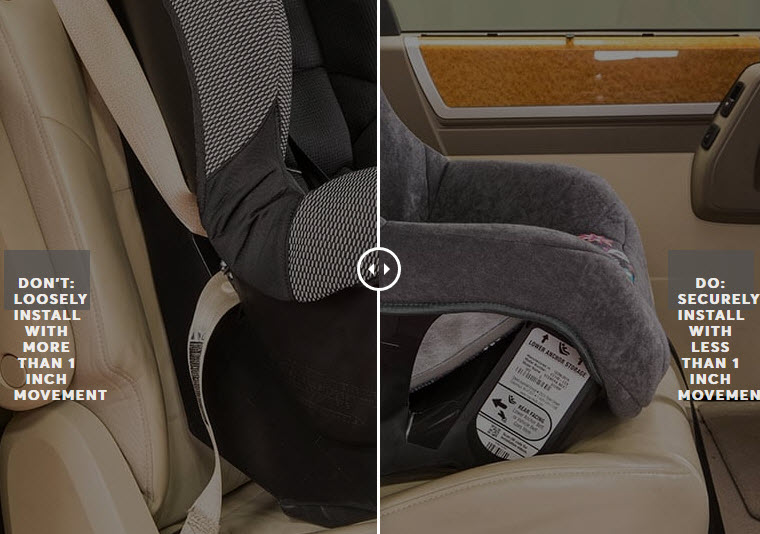Originally posted by: www.consumerreports.org
Motor vehicle injuries are the leading cause of death for children in the U.S., underscoring the importance of correctly installing a car seat and safely strapping in the child.
Most drivers with children in the vehicle believe their car or booster seat was installed correctly (76 percent), but almost half (46 percent) of the installations are flawed in some way, according to the 2015 National Child Restraint Use Special Study.
Consumer Reports routinely tests child seats in three areas: crash protection, ease of use, and ease of installation in various vehicles.
To help drivers properly secure their children, we’ve identified some common mistakes, including those noted in the study.
Review the images below to find out whether you too may be inadvertently making mistakes, and learn how to correct them.
First Steps: Car-Seat-to-Vehicle Installation
See below for what not to do and what you should be doing when installing your car seat in your car.
Don’t: Loose installation, defined as having more than 1 inch of movement either forward and back and/or side-to-side when force is applied at the belt path.
Do: Regardless of whether you’re using LATCH anchors or the vehicle seat belt, the installation should have less than 1 inch of movement both forward and back and side-to-side when pulled at the belt path. If you’re installing with the vehicle seat belt, be sure to consult your vehicle owner’s manual to learn how to properly lock the seat belt.
Don’t: Incorrect recline angle for rear-facing car seats.
Do: Be sure to follow the manufacturer’s instructions for setting the recline on your rear-facing seat. An overly upright seat can cause an infant’s head to fall forward and obstruct his or her breathing. Reclining too far can reduce the seat’s ability to protect the child in a crash.
Don’t: Use of forward-facing belt path for rear-facing orientation or rear-facing belt path for forward-facing orientation.
Do: Consult your car-seat manual and the seat’s labels to ensure you are using the correct belt path. Confusing the paths could mean the seat is not secure or may not respond as it should during a crash.
Don’t: Not using a top tether for forward-facing installation.
Do: For all forward-facing installations, always attach the top tether whether the seat is installed using the lower anchors or the seat belts. The top tether significantly reduces a seat’s forward motion, which can reduce injury to the child, especially head injury. Car-seat misuse research conducted by the University of Michigan Transportation Research Institute also suggests that to some degree, top tether use may help mitigate the effects of other misuses, such as loose harnessing or loose installation. Top tethers not only enhance safety but are also easy to use.
While keeping your child buckled in safely is important, don’t forget to teach your child the basics of safety too! With our no-cost McGruff Safe Kit, you will have the tools to have this essential conversation with them in a fun, kid-friendly way. Request yours today!
REQUEST A KIT











